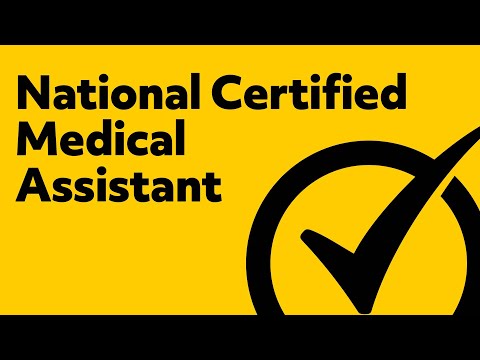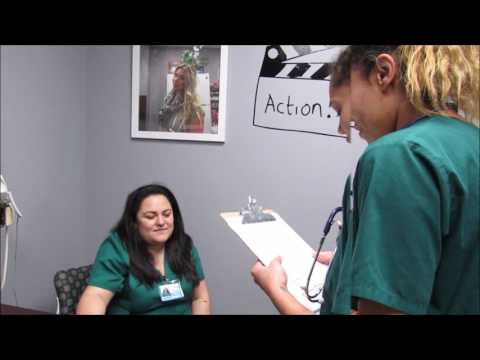Making the Transition from Medical Assistant to Nurse
Contents [show]
This is a blog for Medical assistants who want to know how to make the transition to becoming a nurse. It covers the basics of what you need to do in order to make the switch, including getting the right education and experience.
Checkout this video:
The role of the medical assistant
The medical assistant is a healthcare professional who helps to support the work of doctors and nurses in a variety of settings. In some cases, the medical assistant may also provide direct patient care. The roles and responsibilities of the medical assistant vary depending on the state in which they work, but they typically include taking medical histories, recording vital signs, providing patient education, and helping to prepare patients for examinations.
In order to become a nurse, one must first complete an accredited nursing program and pass the National Council Licensure Examination (NCLEX). After passing the NCLEX, the individual will be able to apply for a nursing license in their state of residence. Once licensed, nurses are required to complete continuing education credits in order to maintain their licensure.
The role of the nurse
Nurses play a vital role in the healthcare industry. They provide patient care, support and education. They also act as advocates for their patients. Nurses work in a variety of settings, including hospitals, clinics, physician offices, long-term care facilities and home health agencies
The similarities between the two roles
There are many similarities between the role of a medical assistant and a nurse. Both roles require a high level of customer service, communication, and organizational skills. In both roles, you will be working with patients, doctors, and other healthcare professionals to provide care and assistance.
However, there are some key differences between the two roles. Nurses have a more advanced level of training and education than Medical Assistants They are also responsible for more patient care tasks, such as taking vitals, administering medication, and providing wound care. In addition, nurses often have more autonomy than medical assistants in terms of their work responsibilities.
The differences between the two roles
The medical assistant and registered nurse roles have many similarities, but there are also some key differences. Both positions work collaboratively with physicians and other members of the healthcare team to provide direct patient care. But nurses have additional responsibilities, such as patient teaching, charting, coordinating care, and supervising other members of the healthcare team. Nurses also have more advanced skills in assessment and diagnosis.
Medical assistants may be supervised by nurses or other healthcare professionals, but they generally do not have supervisory roles themselves. Nursing is a more autonomous profession, with nurses typically having more control over their own practice. This difference can be a significant factor in career satisfaction. For someone who likes to work independently and make decisions, nursing may be a better fit than working as a medical assistant.
Another key difference is the educational requirements for each profession. Medical assistants typically complete a one- or two-year accredited program and earn a certificate or diploma. Registered nurses must complete at least an accredited two-year associate degree in nursing (ADN) or four-year bachelor of science in nursing (BSN) program. Some employers prefer to hire nurses with a BSN, but an ADN is still sufficient for most entry-level positions.
If you’re considering making the transition from medical assistant to nurse, it’s important to research the differences between the two roles to ensure that nursing is the right fit for you.
The training required for each role
Medical assistants and nurses play vital roles in the healthcare industry. Both occupations require a dedication to providing quality patient care. However, there are some key differences between the two roles. Nurses must have at least a two-year degree from an accredited nursing program, while medical assistants can enter the field with a postsecondary certificate. Nurses also have more responsibilities and autonomy than medical assistants. They must be able to independently make decisions about patient care. Nurses also have greater opportunities for advancement than medical assistants.
If you are a medical assistant who is interested in becoming a nurse, there are some things you need to know before making the transition. Here is an overview of the training required for each role:
Medical Assistant:
A medical assistant can enter the field with a postsecondary certificate or diploma from an accredited school. Many programs can be completed in less than one year. After completing an accredited program, medical assistants must pass a credentialing exam, such as the Certified Medical Assistant exam, to become certified. Some states also require medical assistants to be licensed.
Nurse:
Nurses must have at least a two-year degree from an accredited nursing program. The most common type of program is an associate’s degree in nursing (ADN), but some nurses opt to get a four-year bachelor of science in nursing (BSN) degree. After completing an accredited nursing program, nurses must pass the National Council Licensure Examination (NCLEX) to become licensed as a registered nurse (RN).
The skills needed for each role
Medical assistants and nurses perform many of the same duties. Both work with patients, provide care and assistance, and work with other members of the healthcare team. However, there are some important differences between the two roles. Nurses have more training and education than medical assistants, and they are also responsible for more complex tasks. Here are some of the skills you will need to transition from medical assistant to nurse:
-Communication: Nurses need to be able to effectively communicate with patients, families, and other members of the healthcare team. They need to be able to explain complex medical information in a way that is easy to understand.
-Critical thinking: Nurses must be able to assess a patient’s condition and make decisions about their care. They need to be able to think quickly and efficiently in order to provide the best care possible.
-Patience: As a nurse, you will often be working with patients who are in pain or who are dealing with difficult situations. It is important that you are able to remain calm and patient during these times.
-Flexibility: Nursing can be a demanding job, and you will often have to work long hours. It is important that you are able to be flexible in your schedule and your workload.
-Empathy: One of the most important qualities a nurse can have is empathy. This means being able to understand and share the feelings of another person. Empathy is essential in order to provide compassionate care for patients and their families.
The challenges of making the transition from medical assistant to nurse
Medical assistants typically have less medical training than nurses, so making the transition to nursing can be a challenge. Nurses need to be able to assess patients, make decisions about their care, and provide hands-on care. They also need to be able to work with other members of the healthcare team.
Medical assistants who are interested in becoming nurses can take steps to improve their chances of making the transition. They can take courses to improve their medical knowledge and clinical skills. They can also get experience working in a healthcare setting.
Making the transition from medical assistant to nurse is not always easy, but it is possible. With the right preparation, medical assistants can make the transition and become successful nurses.
The benefits of making the transition from medical assistant to nurse
There are many benefits to making the transition from medical assistant to nurse. With additional training and education, nurses can advance their careers and improve their earnings potential. In addition, nurses can enjoy greater job satisfaction and a sense of fulfillment by helping patients achieve better health outcomes.
The best way to make the transition from medical assistant to nurse
There are many ways to make the transition from medical assistant to nurse, but the best way is to get a degree in nursing. With a degree in nursing, you will be able to work as a registered nurse (RN) and have the opportunity to further your career by becoming a nurse practitioner (NP) or a certified nurse midwife (CNM). You will also be able to work in a variety of settings, including hospitals, clinics, physician offices, and Home Health Care agencies.
FAQs about making the transition from medical assistant to nurse
Considering a career change from medical assistant to nurse? You’re not alone! Nurses make up the largest healthcare occupation, with over 3 million jobs nationwide. And, with an aging Baby Boomer population and a growing emphasis on preventive care, the demand for nurses is only expected to rise. Making the switch from medical assistant to nurse can be a great career move – but it’s not without its challenges. Here are some FAQs to help you make the transition:
How do I become a nurse?
There are many paths to becoming a nurse, but most involve completing an accredited nursing program. Nursing programs typically last 2-4 years, and lead to a variety of degree and diploma options. You can find nursing programs at community colleges, technical schools, and four-year universities. Some employers also offer nursing orientation programs for medical assistants who wish to become nurses.
What are the differences between medical assistants and nurses?
Medical assistants typically perform administrative and clinical tasks in healthcare settings, such as doctor’s offices, hospitals, and clinics. Nurses provide direct patient care in a variety of settings, including hospitals, clinics, long-term care facilities, and home health agencies. Nurses also have more responsibilities than medical assistants – they may supervise other staff members, develop patient care plans, and provide patient education.
What are the challenges of making the transition from medical assistant to nurse?
One of the biggest challenges of making the transition from medical assistant to nurse is acquiring the necessary education and experience. Although some employers offer nursing orientation programs for medical assistants, most require that nurses have at least an Associate’s Degree in Nursing (ADN) or Bachelor of Science in Nursing (BSN). Nurses must also pass a national licensing exam – the National Council Licensure Examination (NCLEX) – before they can practice. Another challenge is adjusting to the heavier workload that comes with being a nurse. Nurses often work longer hours than medical assistants, and may be required to work nights and weekends.







